Dog Breeds with Unique Tail Characteristics – A dog’s tail is an excellent way to show their happiness or feelings. Did you know that not all dog tails are the same? Different dogs have tails of different sizes and shapes and have other jobs.
Join us on a tail-wagging trip as we look at seven different dog types with tails that will blow your mind. From the Shiba Inu’s elegant and curly plume to the Pug’s funny corkscrew curl, each dog’s tail tells a story about its history, personality, and even job as a working dog.
Find out how the Basenji’s tail shows how independent it is or how the Siberian Husky’s tail shows how it feels. These tail stories are more than just a physical trait; they show how different dogs can be.
Whether you like dogs, want one, or are just interested in the world of dogs, this blog will get you interested and give you a new appreciation for the unique tail-wagging wonders of the canine kingdom. So, grab your leash, and let’s go on this tail-tastic trip together!
7 Dog Breeds with Unique Tail Characteristics
People say that man’s best friend is his dog. They talk to each other in different ways, and their tails are one of the most expressive parts of their bodies. Even though all dogs wag their tails, not every tail is the same. This blog will show you seven Dog Breeds with Unique Tail Characteristics.
1. The Shiba Inu: The Elegant Plume

The Shiba Inu is a Japanese breed known for its lively personality. It has a beautiful tail resembling a feather that sets it apart. This tail is full and bushy, and it curves smoothly over the back like the feathers of a royal bird. The Shiba Inu’s tail is not only pretty to look at, but it is also helpful.
During the cold winters in Japan, this breed wraps its fuzzy tail around itself to keep warm. A Shiba Inu’s confident and elegant personality is often compared to that of a small, noble fox because its tail stands up straight and sometimes gently wags. It is the first dog on our list of 7 Dog Breeds with Unique Tail Characteristics.
Also Read: Art of Dog Photography
2. The Pug: The Quirky Corkscrew Curl
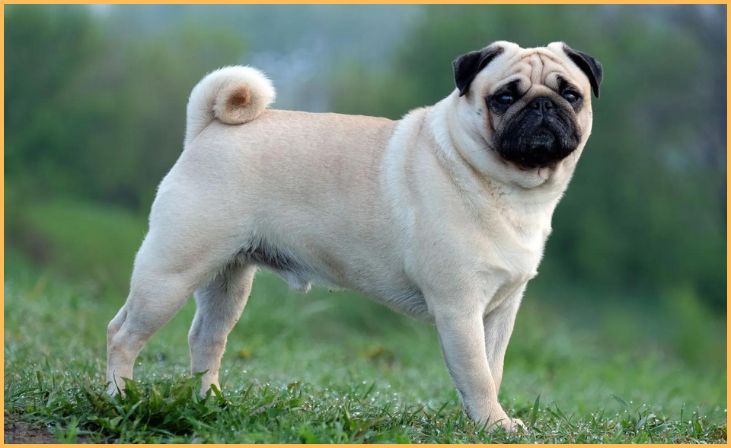
Pugs are known for having funny and charming personalities, and their tails go perfectly with that. Pugs have a tightly curled tail that rests over their backsides. This gives them a cute look that has won over many pet lovers.
Even though this curl may not serve a specific purpose, it makes their looks more expressive and funny. When a Pug is happy or excited, its tail often curls up into a small kink. This adds a bit of fun and playfulness to its already cute personality. The Pug’s tail shows how unique and cute the breed is. It is the second dog on our list of 7 Dog Breeds with Unique Tail Characteristics.
3. The Basenji: The Independent Flag
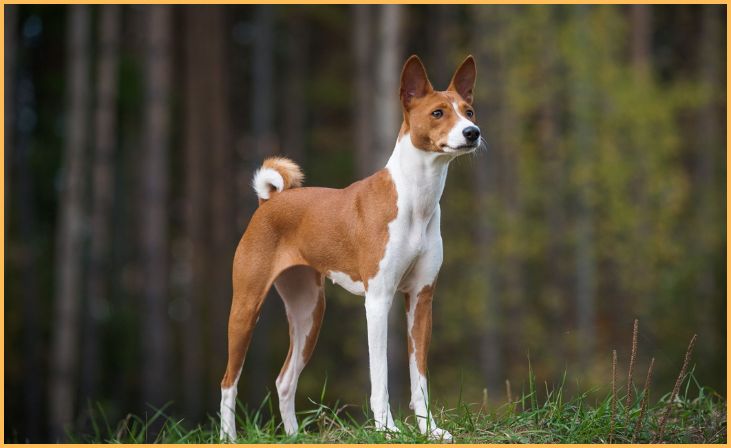
The Basenji, which comes from Africa, is known as the “barkless dog” with a tail that stands out. It’s curled tightly forward, like a flag flapping in the wind. Not only does the Basenji’s tail look different, but it also shows how independent the dog is. In the past, Basenjis were used as hunting dogs that had to get through thick brush to find a game.
The way their tail was set up kept it from getting caught in the plants and helped them keep their speed and agility. It shows the breed’s ability to be independent and clever. It is the third dog on our list of 7 Dog Breeds with Unique Tail Characteristics.
4. The Siberian Husky: The Emotive Plume
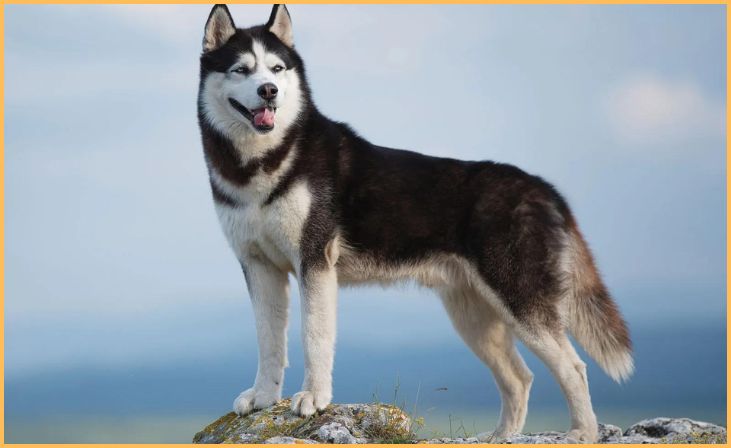
Siberian Huskies are known for their beautiful looks, and their tails are a big part of how they show how they feel. Huskies have a plume-like tail that stands up and curls over their back. It moves in ways that show happiness, energy, and interest.
When a Husky is happy, its tail might look like a smooth arc, but it wags hard and wide when playing or getting excited. When the tail hangs down, on the other hand, it can show sadness or obedience. This breed’s tail shows us how active and expressive they are and how they feel. It is the fourth dog on our list of 7 Dog Breeds with Unique Tail Characteristics.
5. The Australian Shepherd: The Energetic Whip
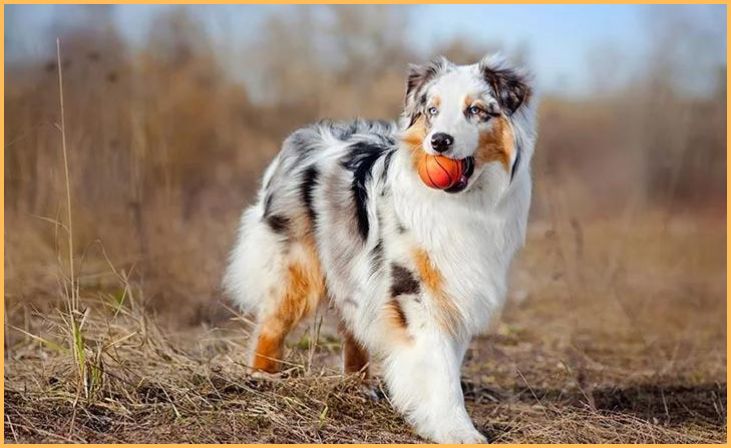
Australian Shepherds are known for their ability to herd, and their eager work is matched by their tail. They have a long tail that looks like a whip and helps them move cattle. This tail’s quick and agile movement is a sign of the breed’s high energy and quickness.
It lets them tell the animals they work with what they want to do. Aside from being functional, the Australian Shepherd’s tail is a striking trait that shows how athletic they are and how much they care about their work. Whether herding or playing dog sports, their tail is always in sync with how busy they are.
6. The Pembroke Welsh Corgi: The Docked Nub

The Pembroke Welsh Corgi often has its tail cut off. This is a tradition that goes back a long way. Corgis used to have long tails, but many had them cut off so they wouldn’t hurt themselves while handling cattle.
Some Corgis still have their short tails that look like nubs. Whether this breed’s tail is left long or cut off, it shows how hard they have worked and how flexible they are. The short tail helps them move quickly while herding, and its presence or lack reminds them of the Corgi’s history as a cattle herder. The debate about whether or not to cut off Corgi’s tail is still going on, which shows that this is a question of personal choice.
Also Read: Canine Breeds with Distinguished Bearded Faces
7. The Greyhound: The Streamlined Sweep

Greyhounds are the fastest dogs in the world, and their tail is a testament to their speed and elegance. With a long, slender tail that tapers to a point, Greyhounds have a streamlined silhouette that minimizes air resistance during a race.
This tail plays a vital role in their athleticism, acting like a rudder as they chase their prey on the racetrack. Beyond functionality, the Greyhound’s tail is beautiful, reflecting the breed’s grace and speed. When at rest, it often lies flat and relaxed, but when in motion, it transforms into a sleek, aerodynamic extension of the dog’s body, allowing it to reach breathtaking speeds.
In conclusion, a dog’s tail is more than just a physical feature; it reflects their history, personality, and function. Each of these seven dog breeds showcases a unique tail characteristic that adds to their charm and individuality.
So, the next time you encounter one of these breeds, take a moment to appreciate the tail that tells its unique story, serving as a testament to the rich diversity of the canine world.
7 Training Tips for Dog Breeds with Unique Tail Characteristics
Training dogs is a rewarding yet sometimes challenging endeavor, and when dealing with breeds with unique tail characteristics, it’s essential to tailor your training approach to their specific needs. Here are seven training tips to help you effectively train dog breeds with distinctive tails:
1. Understand the Breed’s History

Before embarking on training, delve into the history of the breed. Understand why the tail has unique characteristics and how it may have been used in the breed’s original purpose.
For example, the Basenji’s curled tail reflects its role as a hunting dog, and the Siberian Husky’s expressive tail is linked to its heritage as a sled dog. This historical context can help you understand the breed’s instincts and behaviors better.
2. Respect Their Tail Sensitivity
Many dogs, especially those with unique tail characteristics, can be sensitive about touching or manipulating their tails. When handling your dog, be gentle around their tail and gradually desensitize them to tail-related contact.
Use positive reinforcement techniques like treats and praise to create positive associations with tail handling.
3. Positive Reinforcement Training
Positive reinforcement is a highly effective training method for all dog breeds, including those with unique tail characteristics. Treats, praise, and love are all good ways to reward good behavior.
When your dog displays behaviors related to their tail, such as Husky’s expressive tail wagging, reinforce these actions positively to encourage them.
4. Leverage Breed-Specific Traits
Tail characteristics are often linked to certain breed-specific traits. For example, Australian Shepherds are known for their agility, and their energetic tail may be an extension of that trait.
Incorporate activities that align with these traits into your training. For Australian Shepherds, agility training and herding exercises can be fun and stimulating.
Also Read: Pit Bull Memorial Ideas
5. Socialization Is Key
Socialization is crucial for all dog breeds, especially those with unique tail characteristics. Expose your dog to various people, animals, and environments to help them become well-adjusted and comfortable in different situations. This can reduce anxiety and excessive tail-related behaviors in unfamiliar settings.
6. Tail-Specific Commands
Consider teaching your dog specific commands related to their tail. For example, you can use powers like “tail down” or “tail still” to help control tail movements when necessary. Be patient and consistent in reinforcing these commands.
7. Seek Professional Training Assistance
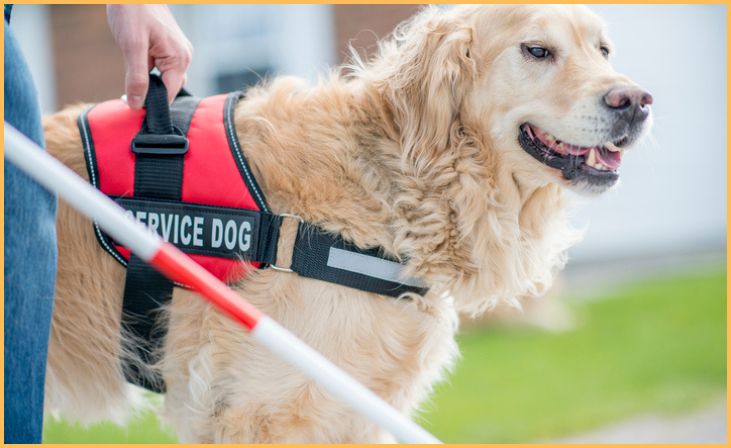
If you encounter difficulties in training your dog, don’t hesitate to seek professional help from a certified dog trainer or behaviorist. They can provide personalized guidance and techniques tailored to your dog’s breed and characteristics, ensuring a positive training experience.
We’ve unraveled the fascinating tales of seven dog breeds with unique tail characteristics in the vibrant tapestry of canine diversity. From the elegant plume of the Shiba Inu to the quirky curl of the Pug and the independent flag of the Basenji, each tail tells a story, revealing a deeper connection to the breed’s history and personality.
As we wrap up this tail-wagging journey, remember that every dog, regardless of its tail, brings something unique to our lives. Understanding and appreciating the individuality of these breeds not only enriches our understanding of them but also deepens our bond with our furry friends.
So, the next time you encounter one of these remarkable breeds, take a moment to admire the eloquent language of their tails. These tails are not just features; they are a testament to the wondrous diversity of the canine world, where tails do more than wag; they weave tales of love, history, and companionship that enrich our daily lives.
FAQs
While communication is a significant role of a dog’s tail, it also serves practical functions. For example, some breeds use their tails for balance and warmth or as a tool in their original work, like herding or hunting.
You can train your dog to some extent to control its tail movements. Positive reinforcement techniques can help you manage tail-related behaviors, such as excessive wagging or stillness, and guide when and where specific tail actions are appropriate.

